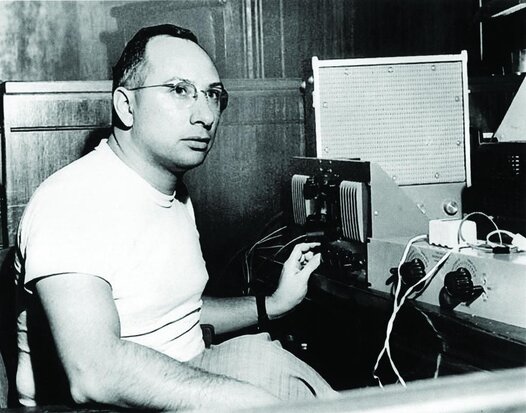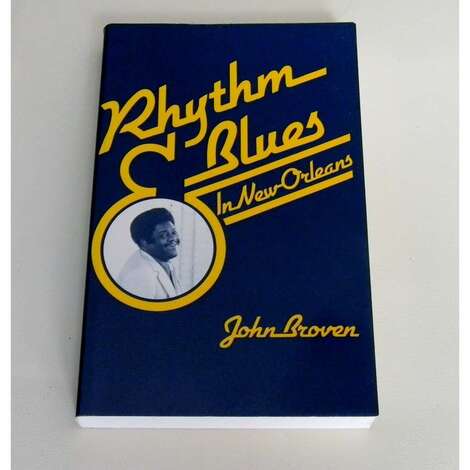
Cosimo Matassa
Cosimo Vincent Matassa (1926 – 2014) started J&M Recording Studio in 1945 in the back room of his parents’ shop at the junction of Rampart Street and Dumaine in New Orleans. A self-effacing man, he would often play down the importance of his role in the New Orleans music scene, saying that "a lot of good musicians made me look good". His studios saw legends of R&B Little Richard, Ray Charles, Fats Domino, Dr. John, Allen Toussaint and Big Joe Turner pass through their doors.
Many of the records produced at J&M were hugely popular at the time, and the biggest hits sold millions of copies. The reverberations of the J&M output were felt around the world, and heavily influenced the development of many styles – ska and rocksteady in Jamaica, soul and funk in the USA and the British Invasion bands of the 1960s (Paul McCartney’s parroting of Fats Domino’s piano style on ‘Lady Madonna’ being one notable instance). Arguably Cosimo Matassa and the artists who recorded in his studios set the musical template for popular music for the rest of the 20th century and beyond.
Cosimo Vincent Matassa (1926 – 2014) started J&M Recording Studio in 1945 in the back room of his parents’ shop at the junction of Rampart Street and Dumaine in New Orleans. A self-effacing man, he would often play down the importance of his role in the New Orleans music scene, saying that "a lot of good musicians made me look good". His studios saw legends of R&B Little Richard, Ray Charles, Fats Domino, Dr. John, Allen Toussaint and Big Joe Turner pass through their doors.
Many of the records produced at J&M were hugely popular at the time, and the biggest hits sold millions of copies. The reverberations of the J&M output were felt around the world, and heavily influenced the development of many styles – ska and rocksteady in Jamaica, soul and funk in the USA and the British Invasion bands of the 1960s (Paul McCartney’s parroting of Fats Domino’s piano style on ‘Lady Madonna’ being one notable instance). Arguably Cosimo Matassa and the artists who recorded in his studios set the musical template for popular music for the rest of the 20th century and beyond.

Learn More
If you’d like to learn more about Cosimo Matassa and the music he recorded, a great starting point is The Cosimo Matassa Story CD boxset. With over 100 songs, it’s a great introduction to New Orleans R&B. Ace Records’ Cracking The Cosimo Code is also a great compilation CD covering Cosimo’s 60s output.
Cracking The Cosimo Code was compiled by Red Kelly, John Ridley and John Broven, who are also responsible for the website www.cosimocode.com – an amazing resource attempting to document all of Cosimo Matassa’s 1960s recordings.
John Broven’s excellent book Rhythm & Blues in New Orleans is definitely worth investigating. With lots of insight into the scene around the studio, it contains interviews with producers and musicians from the era, including Cosimo Matassa himself.
If you’d like to learn more about Cosimo Matassa and the music he recorded, a great starting point is The Cosimo Matassa Story CD boxset. With over 100 songs, it’s a great introduction to New Orleans R&B. Ace Records’ Cracking The Cosimo Code is also a great compilation CD covering Cosimo’s 60s output.
Cracking The Cosimo Code was compiled by Red Kelly, John Ridley and John Broven, who are also responsible for the website www.cosimocode.com – an amazing resource attempting to document all of Cosimo Matassa’s 1960s recordings.
John Broven’s excellent book Rhythm & Blues in New Orleans is definitely worth investigating. With lots of insight into the scene around the studio, it contains interviews with producers and musicians from the era, including Cosimo Matassa himself.